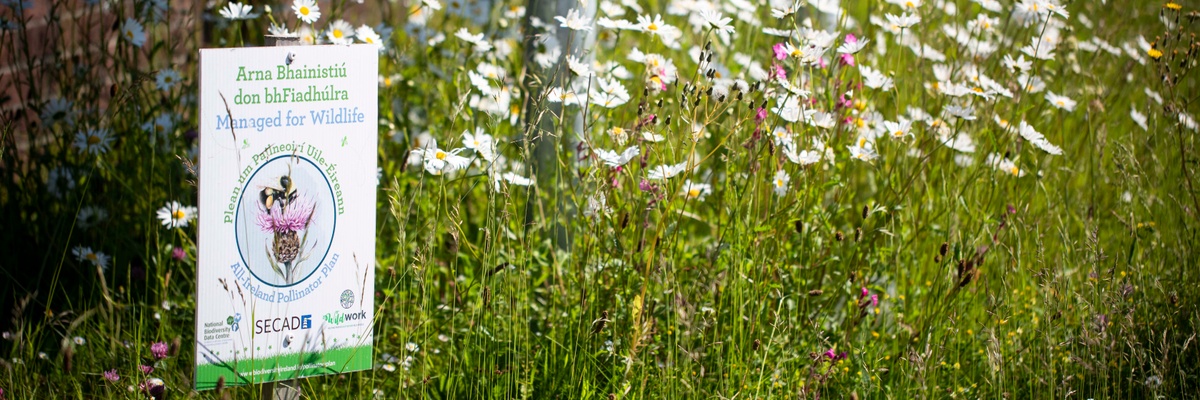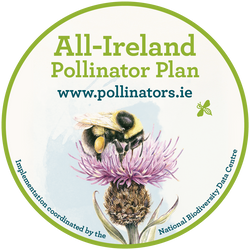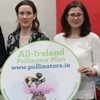Form a team in your school
Form a ‘Pollinator Team’ to include some teachers, students, and your school caretaker. This may be your Eco-schools/Green Flag Committee or a class interested in doing a nature project (Note: It's crucial to have buy-in from the school's caretaker/groundskeeper, as they would be the one who cuts the grass.)
Make sure to visit the Pollinator Plan website to learn more about bees and other insect pollinators.
Create a map and plan
Draw a map of your school grounds to understand the layout and the existing areas that are already pollinator-friendly. These might include areas of longer grass with wildflowers; flower beds; areas where plants like dandelions and clover are allowed to grow; native trees; wild corners; native flowering hedgerows; the wild base of hedgerows; or bare ground for nesting solitary bees. Mark all of these areas on your map.
You can also identify and mark areas of grass where there is the potential to reduce mowing, such as on the margins of playing fields. Lastly, see if you are able to identify spaces that could be nesting sites or flower beds where you'd like to switch to pollinator-friendly plants.
Take Action
Using the school map you have created, start taking action! Here are some suggestions:
The easiest and best way to help pollinators is to reduce grass-cutting - to allow wildflowers such as dandelions and clover to grow. Mark out areas around the grounds where you can reduce mowing to 3 to 6 weeks from March to September.
Speak to your School Caretaker to see how much pesticide is being used and try to reduce this. Most schools probably don’t use insecticide, but might use herbicide to kill weeds. If herbicide is being used, try to make sure it is only for health and safety reasons (e.g. to stop paths becoming slippery) and not to tidy up ‘weeds’, which are actually wildflowers that provide really important insect food!
If your school plants bulbs, try to encourage them to include Crocus, which is a great source of food for pollinators in spring.
Many herbs (e.g. rosemary, oregano, thyme) are excellent sources of food for pollinators. Think about making a school herb bed or herb garden that can be used by bees and also by pupils, staff and the school canteen.
Raise awareness
Make sure to put up signage around the school to show what you are doing. Artwork for the All-Ireland Pollinator Plan ‘Managed for Wildlife’ signs can be downloaded freely from our website or you can make your own.
Consider associated projects to raise awareness of pollinators, their importance, and the actions that are being taken to help. This could be anything from writing projects on pollinators to art, poetry competitions, or the Young Scientist competition, etc. You could also run a blog on your school website about your Pollinator Plan and each action you take.
Measure, Map and Log Progress
As your Pollinator Plan actions progress, take photos and update your school map to show all pollinator-friendly areas. Make sure to take before and after photos annually so you can see the progress!
Make sure to add all of your actions to the Pollinator Plan mapping system to get recognition for your hard work
Lastly, think about submitting your school's Pollinator Plan to the Pollinator Plan website so that others can see the steps your school took and learn from your experience. Email your plan to [email protected]









 "Welcome to the All-Ireland Pollinator Plan. We want to help to give you the knowledge you need to help your local wildlife. Why not form a group to help biodiversity in your school? We’ll tell you all you need to know to help your local biodiversity."
- Úna FitzPatrick and Jane Stout, Co-founders of All-Ireland Pollinator Plan
"Welcome to the All-Ireland Pollinator Plan. We want to help to give you the knowledge you need to help your local wildlife. Why not form a group to help biodiversity in your school? We’ll tell you all you need to know to help your local biodiversity."
- Úna FitzPatrick and Jane Stout, Co-founders of All-Ireland Pollinator Plan
